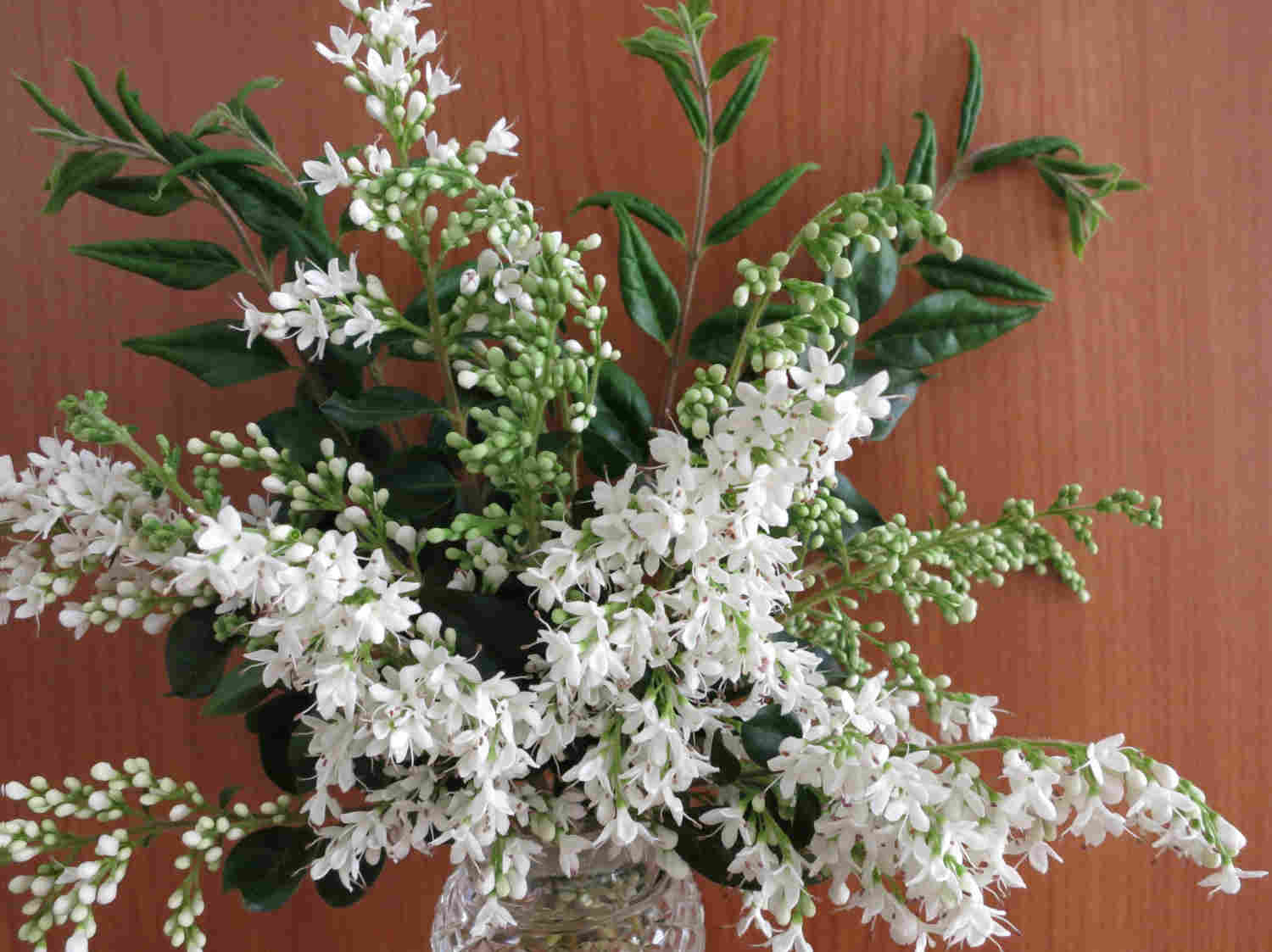Ligustrum.
Privets are in Family Oleaceae > Tribe Oleeae > Subtribe Ligustrinae.
Plants of the World Online (Kew) recognises 46 species native to Asia, Europe and North Africa.
Australia has 1 native species (Ligustrum australianum in Central Australia) and 2 or 3 are naturalised.
Privets can be very invasive producing dense thickets from suckers growing from the roots or damaged stems.
They also produce a large amount of fruit over a long life.
Most are deciduous or evergreen shrubs 2 to 5 m high.
Very occasionally they are small trees that can be 12 to 15 m.
The much-branched shrubs may or may not have hairs on young stems, leaves and inflorescences.
The simple opposite leaves, on a petiole have a smooth edge.
Branched inflorescences are terminal panicles on the main branches and the short axillary side branches near the branch ends.
The tubular or inverted cone-shaped calyx has 4 small lobes or a flattish rim.
The bases of the 4 white or cream petals are fused into a corolla tube with 4 small lobes that spread out.
The 2 stamens, with bi-lobed anthers are inserted onto the base of the corolla.
Anthers, extending past the corolla open sideways through longitudinal slits.
There may be a small appendage from the connective tissue between the paired anther sacs.
The superior ovary, of 2 fused carpels has 2 locules each with 2 ovules.
The style has 2 stigmas but they are largely fused together.
The fruit are drupes with 1 (2) seeds or berries with up to 4 seeds.
Around 7 mm long the fruit mature to a purplish-black.
S.E. Queensland has two species:
Ligustrum sinense the Chinese privet has smaller leaves and hairs on young leaves, twigs and inflorescences.
Ligustrum lucidum, the Broad leaf privet has no hairs on any parts.
J.F.


